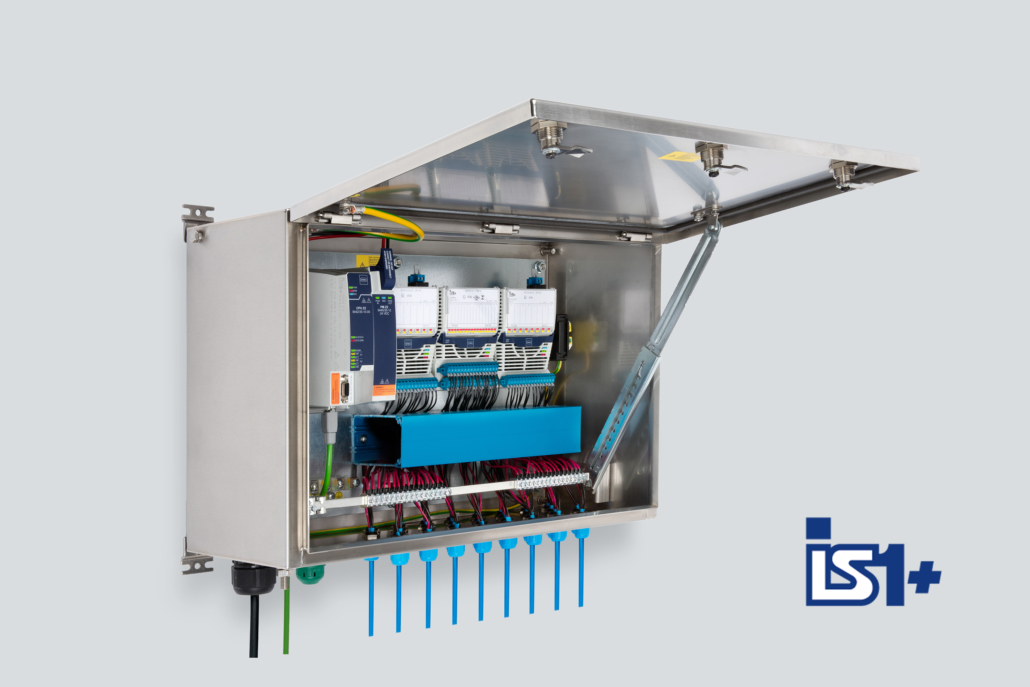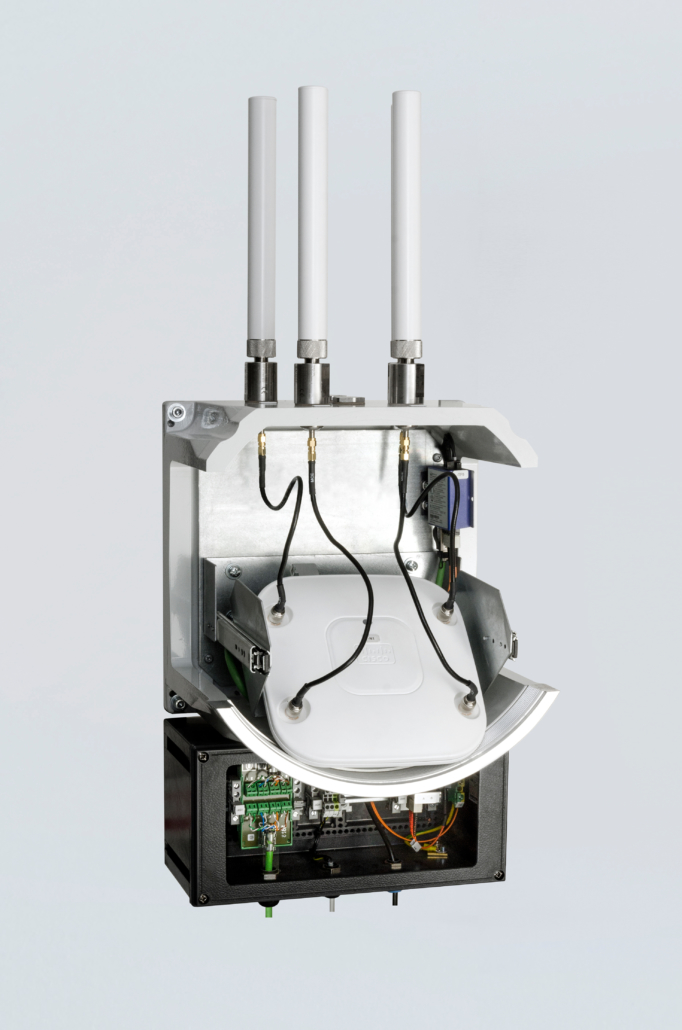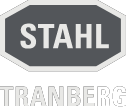Explosion-protected IP communication for digitalisation
Published: March 9, 2020
Category: News
By Isabelle Simonsen
Position:
R. STAHL offers a wide range of solutions to support plant operators when constructing a high-perfomance digital infrastructure for future-proof Ethernet-based process automation.
Fieldbus systems such as PROFIBUS DP or Foundation Fieldbus H1 have now become commonplace, even in hazardous areas. In the context of Industry 4.0, the process industry is on the threshold of taking the next big step in technology with Ethernet networking. A range of fieldbus organisations, including the FieldComm Group (FCG), the ODVA and PROFIBUS International (PI), have developed effective protocols for Industrial Ethernet in the form of HART/IP and FF HSE, EtherNet/IP and PROFINET. Thanks to high bandwidths, these systems enable collision-free, deterministic data communication. Alongside real-time capability, solutions for Industrial Ethernet in the process industry require far more robust components. Cables, plug connectors, switches and media converters must guarantee higher IP protection and be suitable for use in an extended temperature range.
Ethernet for hazardous areas
In order to make Industrial Ethernet available in all hazardous areas of the oil, gas, chemical, petrochemical and pharmaceutical industries, suitable protection concepts are required that can be implemented safely, functionally and cost-effectively. As a leading technology company with extensive experience in explosion protection, R. STAHL offers a range of options for explosion-protected data communication based on a number of different types of protection, and has developed suitable system solutions for visualisation, operation and process data transmission. One example is the IS1+ Remote I/O system, designed for installation in Zone 1 and 2, which can be used to network field devices with a range of distributed control systems in hazardous areas using fibre optics or CAT copper wiring via PROFINET, EtherNet/IP or Modbus TCP.
Conventional field devices are connected in Zone 0, 1 or 2 using I/O modules with up to 16 channels and intrinsically safe, non-intrinsically safe or pneumatic interfaces. For plant operation and process visualisation in Zone 1 or 21 and Zone 2 or 22, R. STAHL HMI Systems has introduced streamlined operating stations with powerful processor technology, HD graphics chips and IoT-optimised firmware to their range. Thin Clients can be networked via Ethernet in “increased safety” (Ex e) type of protection or using Ex op is-protected fibre optics. Fast IP networking means that integration in existing infrastructures is a convenient, simple process, and enables the use of demanding applications such as Soft-SPS or SCADA – even in hazardous areas.

Alternatives to intrinsic safety
“Intrinsic safety” (Ex i) is a common method of eliminating the risk of ignition in transmission technology. When using this type of protection, the current and voltage of the electrical energy are limited, thereby reducing the energy to a non-ignitable extent. However, components and connections designed to be intrinsically safe are not always the most cost-effective or practicable solution for Industrial Ethernet in hazardous areas. For short conductor lengths up to 100 m, copper conductors that comply with the “increased safety” (Ex e) type of protection can be laid up to Zone 1. For Ex e installations, in order to prevent damage and therefore eliminate potential sources of ignition, particular attention must be paid here to the cables and their conduits.
Previously, connecting to corresponding explosion-protected equipment was problematic because conventional RJ45 connectors are not suitable for applications in Zone 1. Ethernet cables can also be laid into Ex d housings using special cable entries. However, because of the significant effort involved, this solution is difficult to implement on-site and, when it comes to modifications or maintenance work, almost impractical to use. As a practicable alternative, R. STAHL has therefore developed an Ex e terminal approved for installation in Zone 1 that is suitable for Ethernet cables with up to eight conductors and a transfer rate of up to 1 GBit/s. The spring-clamp terminal is installed in an Ex e connection chamber, which makes it easy to access for maintenance purposes.
FO: Fast communication over long distances
In contrast to copper cables, fibre optics allow wide-ranging communication networks to be established, for instance to connect individual hazardous areas in extended industrial systems using Ethernet. This enables fast data exchange from sensors and actuators, Remote I/O systems, control and monitoring cameras, or operating terminals at high speed and over long distances. Furthermore, interference-free FO cabling eliminates the effort of grounding and shielding against electromagnetic interference. However, the use of FO in hazardous zones requires special safeguards to be implemented in order to eliminate the risk of ignition caused by optical radiation. The corresponding standard IEC 60079-28 on explosion protection for devices and transmission systems that operate using optical radiation specifies four hazards: The risk of thermal or photochemical ignition, the risk of direct laser-induced discharge, and the risk that particles will heat up and form an ignitable surface temperature. Three corresponding types of ignition protection are specified.
Explosion protection concepts for optical fibre
In the same way as intrinsic safety, fibre optics can be protected using inherently safe optical radiation (Ex op is). To do so, the energy in the light beam is limited to a non-explosive amount. For instance, the maximum permissible optical power for use in Zone 1 and explosion group IIB is 35 mW for temperature class T4. The inherently protected fibre optics can be connected and disconnected in hazardous areas without interrupting operation; this makes installation, modification and maintenance work simple and cost-effective. Ahead of its time, R. STAHL introduced its first op is-protected isolator for its in-house Remote I/O system in the 1990s. The current product generations even make it possible to install an optical ring with convenient diagnostics and notification functions – for instance in the event that a fibre breaks. For this purpose, R. STAHL’s range includes corresponding media converters and switches with four FO ports in the Ex op is type of protection. These distributors, which are also adapted for the PROFINET standard, feature ring functionality based on the Media Redundancy Protocol (MRP).
In accordance with the specifications of the Ex op pr type of protection (“protected optical radiation”), R. STAHL has constructed splice boxes for FO distributors that are specially designed for Zone 1. Splicing ensures that the distribution is protected against accidental disconnection in a way that complies with standards and is protected against interfering influences by the enclosure. The third type of ignition protection, Ex op sh, is based on an ignition source control method similar to functional safety in accordance with IEC 61508 and IEC 61511, in order to immediately switch off the optical radiation in case of an error.
Wireless networking in hazardous areas
One advantage of wireless systems is their flexible handling. These systems come into their own in temporary installations, when retrofitting existing systems and when exchanging data with mobile devices. As wireless-capable equipment such as Wi-Fi access points, mobile network components and RFID readers pose an electrical ignition hazard, radio transmission in hazardous areas requires suitable ignition protection for the installed devices and the (wireless) interfaces.
As a rule, Wi-Fi networks are in operation in the administration and logistics departments of many businesses. However, in most situations, the advantages of a WLAN network only come to the fore when a network is managed uniformly across the company under central administration. As a result, many users are keen to use identical devices in their production areas when extending their Wi-Fi network. In general, however, these devices are not approved for operation in hazardous areas. This is why R. STAHL offers application solutions based on a wide range of enclosure systems and components, with which conventional Wi-Fi access points and other network components can be adapted quickly for use in hazardous areas.

Intrinsically safe antenna connection
As well as safeguarding the wireless device, the connected antenna must also be protected against potential ignition hazards. The permissible limiting values for the radiated wireless power at the antenna (EIRP) are specified in IEC 60079-0 and range from 2 W to 6 W, depending on the explosion group of the surrounding gases or vapours. The antenna gain must be taken into account here. In addition, the standard requires potential errors for devices installed in Zone 1 to be taken into account in order to ensure that even malfunctions cannot cause an explosion.
Although it is possible in principle to position the antenna in the explosion-protected enclosure with the Wi-Fi access point when installing Wi-Fi in Zone 1, this has an adverse effect on the wireless performance and radiation angle. Instead, explosion-protected versions of external antennae, usually with Ex e degree of protection, can be used. However, the available portfolio is restricted to a few models with omnidirectional radiation, which means that the range of options is slightly limited when it comes to planning, installation and maintenance.
As an effective alternative, R. STAHL offers the HF isolator from its 9730 series – a solution that converts the wireless signal into an intrinsically safe signal. This allows the wireless system to be used with any industrially capable antenna. In addition, it simplifies handling and operation, as the connection between the wireless-capable device and antenna is established using a plugged-in cable rather than the inflexible fixed wiring that has been used up to now.
In short
Currently, leading explosion protection specialists such as R. STAHL offer a highly diversified range of products and solutions for explosion-protected Ethernet communication via cables, FO and Wi-Fi. This makes system components that are essential to the process industry when constructing and expanding a high-performance digital infrastructure available up to Zone 1. This enables future-proof process automation that corresponds to the requirements of Industry 4.0 and the industrial IoT.




